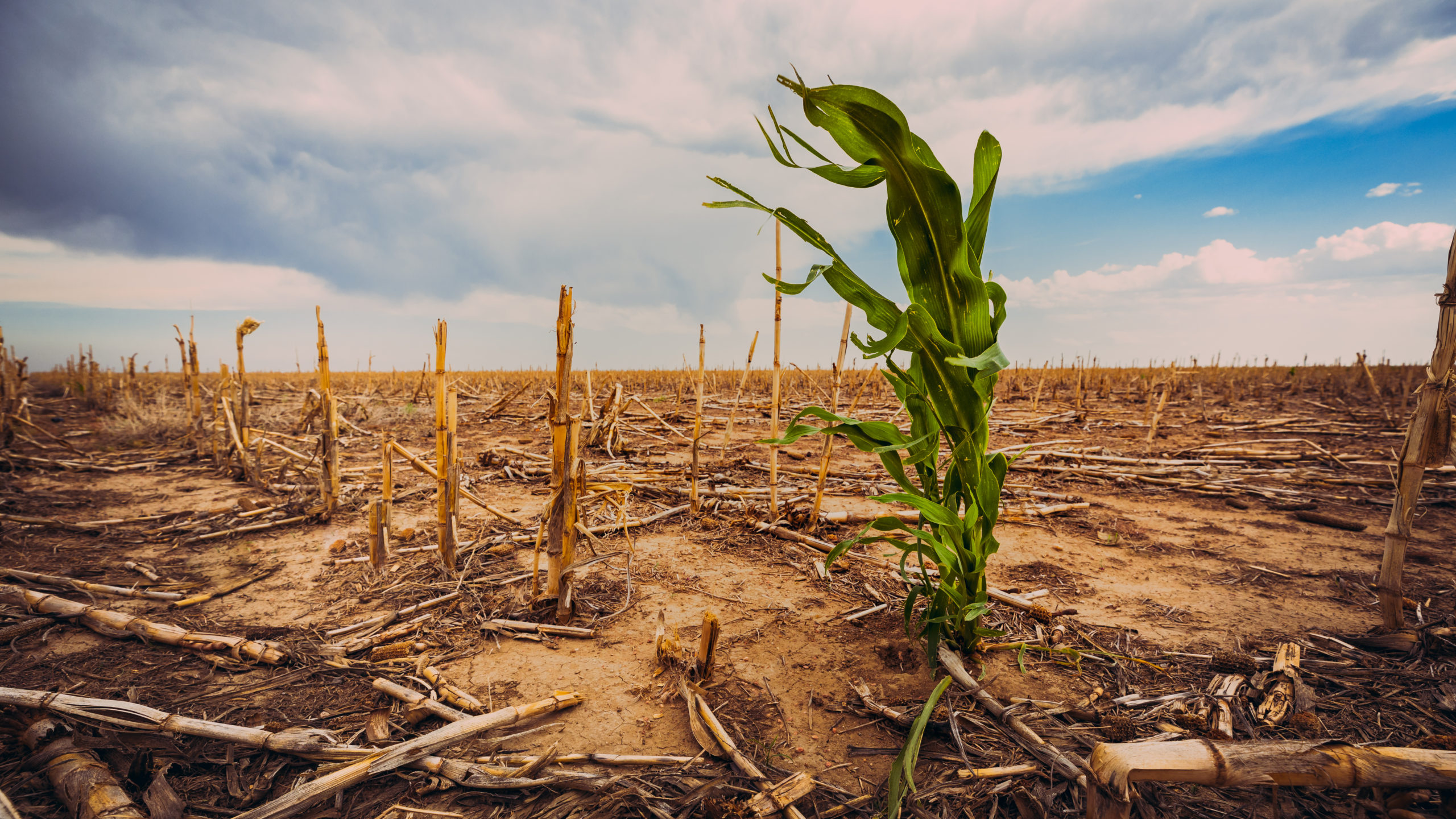Climate change organizations are out there, but they may look different than you think.
That’s because most organizations don’t have the words “climate change” attached to them. This is especially true in our federal government, where funding opportunities are often absent the ‘buzzworthy’ label.
But the truth of the matter is that many organizations do provide funding for climate change, they just don’t always address it “directly” so to speak. Instead, most federal agencies have leveraged their expertise to focus on one particular area in the broader “climate change universe.”
So, if this is the case, how many federal climate change organizations are actually out there?
As it turns out, there’s a lot of them! But, for purposes of this article, we’ve tried to capture the top 10 federal climate change organizations that have community-based funding opportunities.
It’s our hope that by reading this list, you’ll understand that climate change is more than just sea level rise, but a multifaceted crisis that requires adaptation, strategy, and environmental innovation.
We’ve also included links for each program so click away!
10. National Park Service (NPS)
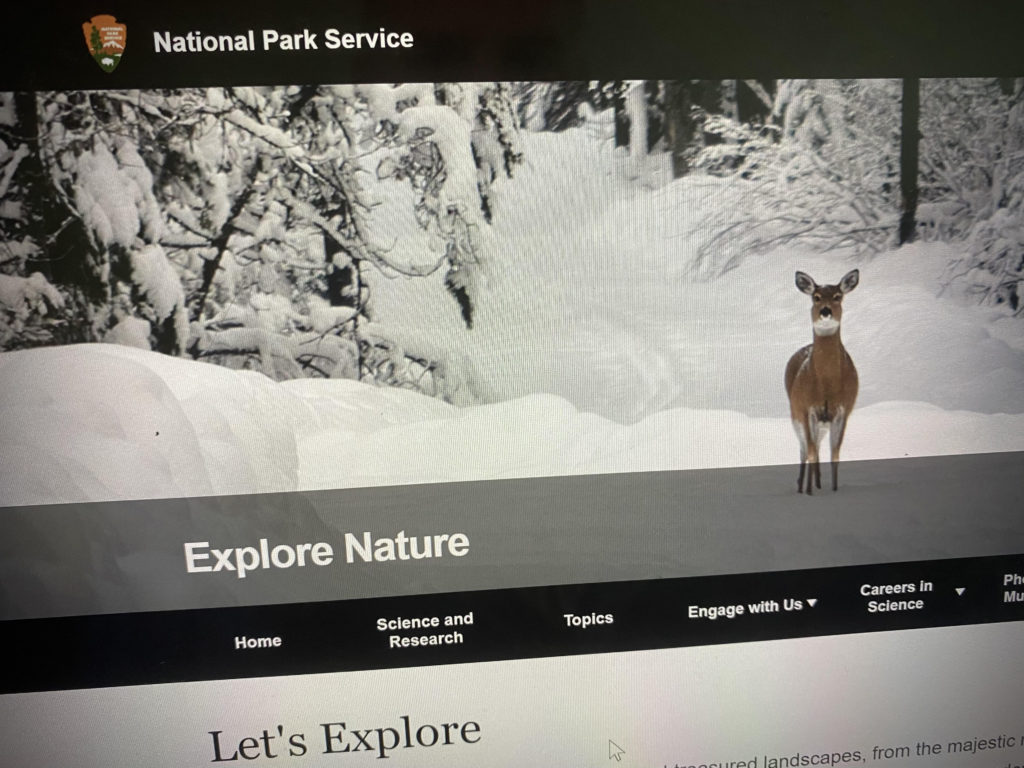
The National Park Service (NPS) protects our nation’s most treasured outdoor places. And efforts to restore our natural environment — including our ecosystems, imperiled species, and night skies — are all important to preserve the parks as our planet changes.
To this effect, the National Park Service created the Climate Change Response Program (CCRP) in order to support broad communication, facilitate adaptation, encourage sustainable operations, and emphasize science with national and international organizations, agencies, and stakeholder groups.
Climate Change Response Program (CCRP)
The National Park Service Climate Change Response Program (CCRP) was established in 2010 to address the effects of climate change throughout the National Park System. Working across four program areas, the CCRP provides training, guidance, technical research, provision of educational products, project support, and planning support in order to preserve the cultural and natural resources of the National Park Service.
The program’s four primary areas of focus include:
- Using science to help the parks manage climate change
- Adaptation planning
- Mitigating our carbon footprint
- Public communication about climate change
9. Fish and Wildlife Service (FWS)

As more than half of endangered and threatened species spend at least some of their life cycle on private lands, the U.S. Fish and Wildlife Service (FWS) recognizes that conserving species must also involve communities, tribes, and landowners in order to protect them. They also recognize the impact that climate change is having on them as evidenced by their new climate change website and strategic plan.
And while there are a number of tools available under the Endangered Species Act (ESA) to assist states, communities, and landowners to implement and plan for projects that protect and conserve endangered species, the Cooperative Endangered Species Conservation Fund is one of the best for “voluntary” conservation projects.
Cooperative Endangered Species Conservation Fund
The Cooperative Endangered Species Conservation Fund is designed to provide grants to states and territories to take part in a variety of voluntary conservation projects. The program provides funding for habitat conservation on non-federal land.
This includes three different types of grants:
- Recovery Land Acquisition Grants
- Habitat Conservation Planning Assistance Grants
- Habitat Conservation Planning Land Acquisition Grants
8. Bureau of Indian Affairs (BIA)
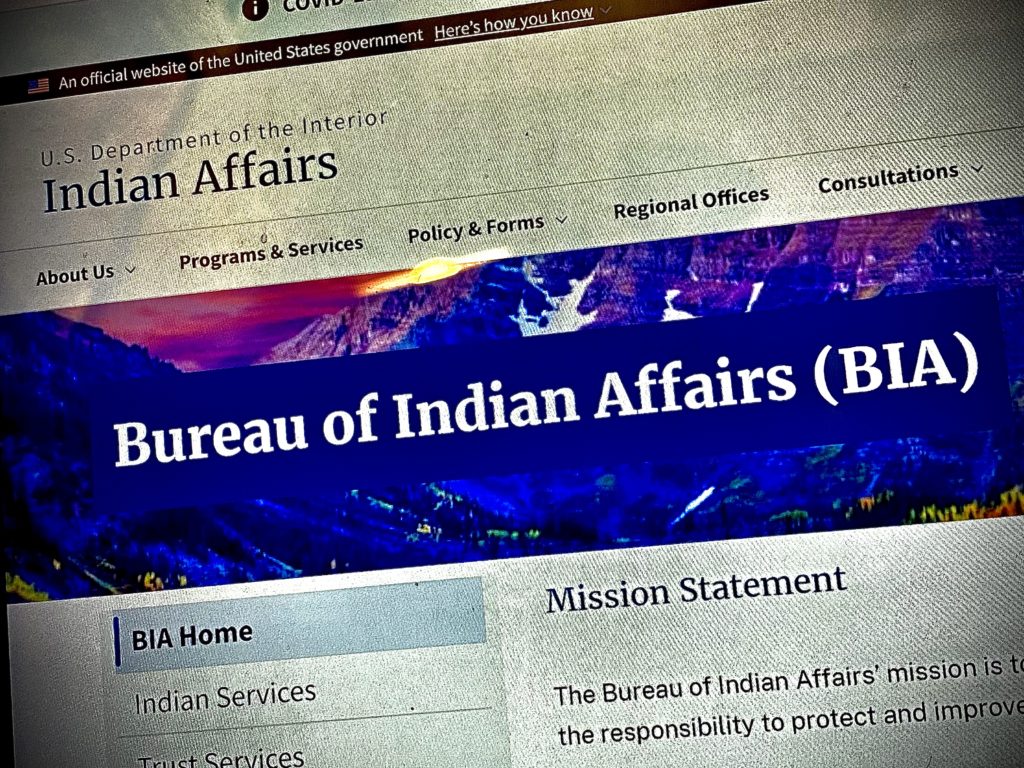
Climate change has brought new challenges to Native American tribes and territories, especially those in Alaska. To address these challenges, the Bureau of Indian Affairs (BIA) has created the Tribal Climate Resilience Program which focuses on planning, travel support, youth programming, data and assessment, and resilience training.
Tribal Climate Resilience Program
The goal of the Tribal Climate Resilience Program is to empower tribal managers to think about climate change. Its main objective is to provide tribal managers with the knowledge and insight necessary to increase resilience, promote smart adaptation, and address coastal and ocean planning needs.
The nine areas funded are:
- Trainings and Workshops
- Adaptation Planning
- Travel Support for Adaptation Planning
- Ocean and Coastal Management Planning
- Travel Support for Ocean and Coastal
- Capacity Building for Scoping Efforts to Support future adaptation Planning Development
- Planning for Relocation, Managed Retreat, or Protect-in-Place Activities for Coastal and Riverine Communities
- Internships
- Youth Engagement
7. Farm Service Agency (FSA)
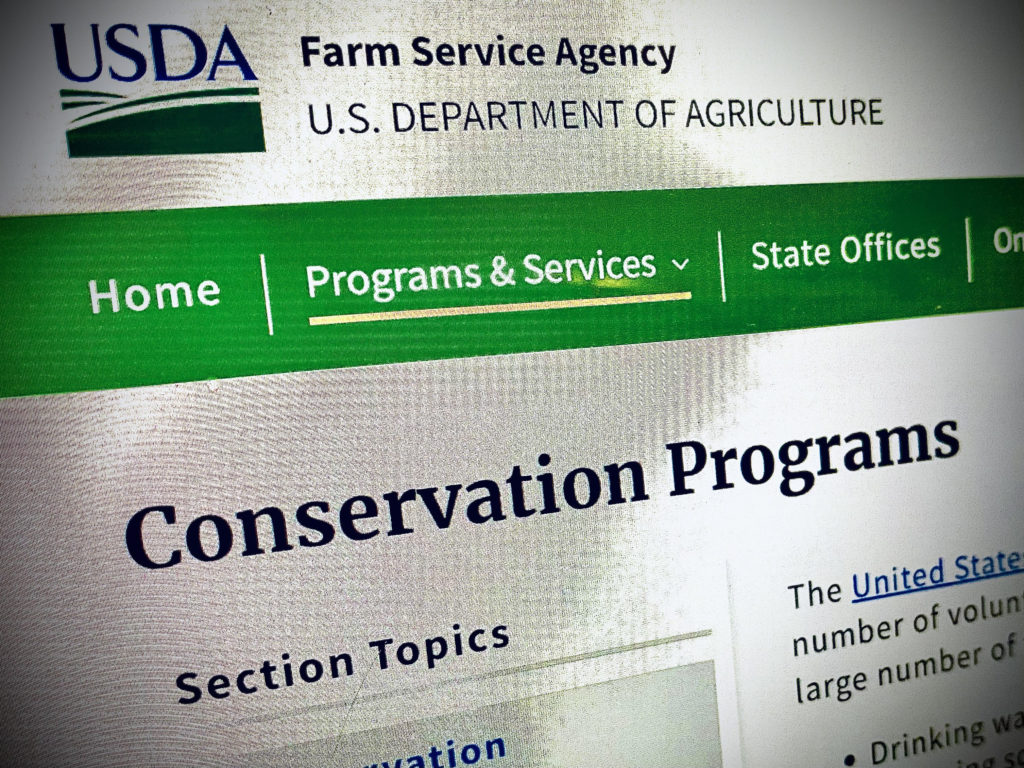
The Farm Service Agency (FSA) falls under the U.S. Department of Agriculture (USDA) and implements agricultural policy, credit and loan programs, disaster and farm marketing programs, commodity, and conservation management.
While the agency does not “directly” address climate change funding for farmers, the agency is one of many climate change organizations that indirectly addresses the issue through its programs; these include conservation programs, energy programs, and disaster assistance programs.
FSA Conservation Programs
The USDA’s Farm Service Agency (FSA) oversees several voluntary conservation programs. Addressing both farming and ranching conservation efforts, their programs seek to address drinking water protections, wildlife habitat preservation, forests and wetlands preservation and restoration, reducing soil erosion, and aiding farmers who have been affected by natural disasters.
Their conservation programs include the (1) Conservation Reserve Program, (2) Conservation Reserve Enhancement Program, (3) Emergency Conservation Program, (4) Emergency Forest Restoration Program, (5) Farmable Wetlands Program, (6) Grassland Reserve Program, and (7) the Source Water Protection Program.
Conservation Reserve Program (CRP)
The Conservation Reserve Program (CRP) is a program that pays farmers a yearly rental payment in exchange for removing environmentally sensitive land from production and planting vegetation that will improve the environmental quality of the land.
Conservation Reserve Enhancement Program (CREP)
The Conservation Reserve Enhancement Program (CREP) targets conservation issues that are deemed a top priority by government organizations and NGO’s. Similar to the CRP, identified farmland is removed from production in exchange for rental payments.
Emergency Conservation Program (ECP)
The Emergency Conservation Program (ECP) provides technical assistance and funding to ranchers and farmers to restore valuable farmland that has been damaged by natural disasters. Additionally, in the event of a sever drought, the program can be implemented for emergency water conservation purposes.
Emergency Forest Restoration Program (EFRP)
Similar to the ECP, the Emergency Forest Restoration Program (EFRP) offers funding in order to restore privately owned forests that have been damaged by natural disasters.
Farmable Wetlands Program (FWP)
The Farmable Wetlands Program (FWP) is a program designed to restore wetlands that have been farmed in exchange for annual rental payments to farmers and ranchers.
Grassland Reserve Program (GRP)
The Grassland Reserve Program (GRP) is a program that provides rental payments in exchange for limiting future development. Its main goal is to prevent pasture and grazing land from being developed or converted to cropland.
Note: The GRP has been repealed by the Agricultural Conservation Easement Program (ACEP)
Source Water Protection Program (SWPP)
Targeting states based on their population and water quality, the Source Water Protection Program (SWPP) protects drinking water, both ground and surface, used by rural residents.
FSA Energy Programs
The FSA offers a variety of energy programs to farmers who want to be involved in biofuel and bioenergy. This includes (1) the Biofuel Infrastructure Partnership, and (2) the Biomass Crop Assistance Program.
Biofuel Infrastructure Partnership (BIP)
The Biofuel Infrastructure Partnership (BIP) provides grants to expand renewable fuel infrastructure. The program funds activities that expand renewable fuel infrastructure so that American consumers have more renewable fuel options.
Biomass Crop Assistance Program (BCAP)
The Biomass Crop Assistance Program (BCAP) focuses on owners and operators of agricultural forest land and offers financial assistance to those that want to produce biomass feedstocks.
Disaster Assistance Programs
The USDA Farm Service Agency offers a variety of programs and services to help farmers, ranchers, businesses, and communities recover from natural disaster events such as Hurricanes Harvey, Maria, and Irma.
Livestock Forage Program (LFP)
LFP offers financial compensation to eligible livestock producers who have experienced grazing losses due to fire and drought on native or improved pastureland.
Livestock Indemnity Program (LIP):
LIP helps producers of livestock that have experienced livestock deaths that are (1) above normal mortality rates, and (2) were killed as a result of weather or killed by animals that were reintroduced into the wild by the U.S. government.
Emergency Assistance for Livestock, Honeybees, and Farm-Raised Fish (ELAP):
ELAP offers emergency assistance to eligible producers of farm-raised fish, livestock and honeybees for losses due to adverse weather, disease, or other conditions such as wildfires and blizzards.
Tree Assistance Program (TAP):
TAP offers financial assistance to nursery tree growers and orchardists to rehabilitate and/or replant eligible bushes, trees, and vines that have been damaged by natural disasters.
6. Natural Resources Conservation Service (NRCS)
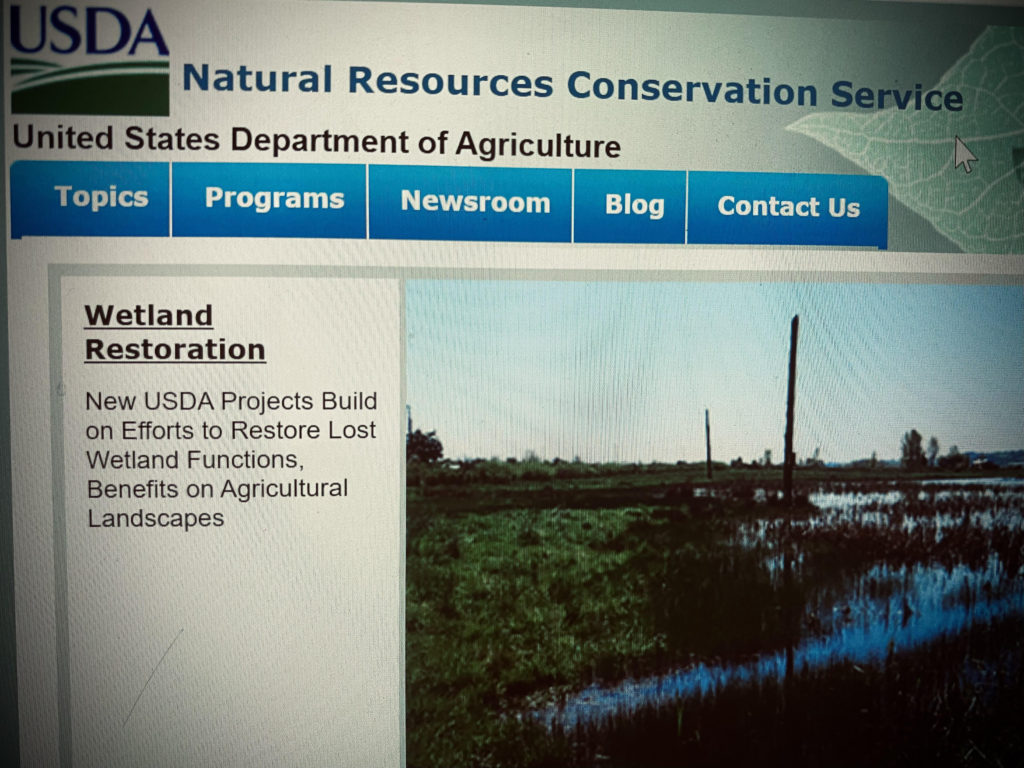
The United States Department of Agriculture (USDA) has the Natural Resources Conservation Service (NRCS) which offers several voluntary programs to both agricultural producers and landowners that provide technical assistance and financial assistance in order to help manage natural resources in a more sustainable manner.
These programs include the Agricultural Management Assistance Program, Conservation Innovation Grants, the Conservation Stewardship Program, the Environmental Quality Incentives Program, and Easements.
Agricultural Management Assistance Program (AMA)
The Agricultural Management Assistance Program (AMA) program helps agricultural producers better manage financial risk through natural resource conservation practices, diversification, and marketing.
This includes planting trees for improved water quality or windbreaks, improving irrigation structures or general water management structures, and other diversification and resource conservation practices including soil erosion control, transitions to farming organically, and integrated pest management.
Conservation Innovation Grants (CIG)
The Conservation Innovation Grants (CIG) is a means to address soil health, water quality, wildlife habitat issues and challenges, and air quality in order to improve agricultural operations.
Conservation Stewardship Program (CSP)
The Conservation Stewardship Program (CSP) is a voluntary program that provides participants with an annual land use payment if landowners produce operation-level environmental benefits. In this aspect, participants are paid based upon their performance: the better their operational performance, the more they’ll receive financially.
Not only does this encourage producers to better manage and address resource concerns, but it encourages additional conservation activities while maintaining, managing, and improving on existing conservation activities.
Environmental Quality Incentives Program (EQIP)
The Environmental Quality Incentives Program (EQIP) is a voluntary program that helps producers make conservation management work for them. The program provides both technical assistance and financial assistance to ag producers in order to address natural resource issues. This includes improved air quality, improved water quality, increased soil health and reduced erosion, improved wildlife habitat, conserved surface and ground water, and drought mitigation.
Agricultural Conservation Easement Program (ACEP)
The Agricultural Conservation Easement Program (ACEP) helps land trusts, landowners, and other entities restore, enhance, and protect wetlands and agricultural land through conservation easements.
5. U.S. Forest Service (USFS)
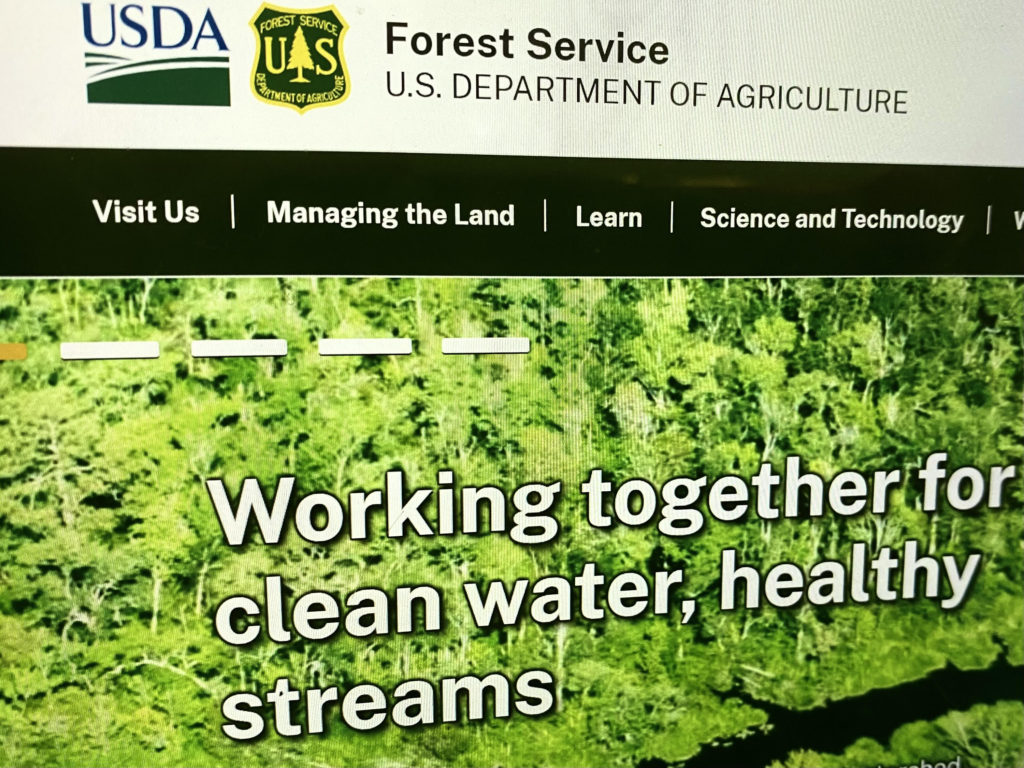
The U.S. Forest Service falls under the USDA as the lead federal forestry agency in the United States.
In addition to their work on public lands, the Forest Service also does a great deal of work with NGO’s, private landowners, tribal governments, and other climate change organizations to incorporate and sustain climate-based, sustainable land management. By directly working with these entities, the U.S. Forest Service can effectively remove carbon dioxide from the atmosphere and store it in soil, trees, and plants where it belongs.
The primary climate change funding opportunities include Cooperative Forestry Programs, the Forest Stewardship Program, the Forest Legacy Program, the Community Forest and Open Space Conservation Program, the Urban and Community Forestry Program, and Wood Innovation Grants.
Cooperative Forestry Programs
The Cooperative Forestry unit works with a host of partners to maintain and enhance forests on private and public land. Those partners include local governments, states, non-profits, and other federal agencies.
The Forest Stewardship Program
The Forest Stewardship Program (FSP) offers assistance to ‘forest land owners’ who demonstrate good stewardship through agroforestry practices and other means.
The program’s three main focus areas include:
- Helping landowners actively manage their land and other related resources
- Keeping and maintaining land in a healthy and productive condition for present and future owners
- Conserving the natural environment while also increasing the economic benefits of the land (such as timber harvesting)
The Forest Legacy Program (FLP)
In partnership with State agencies, the Forest Legacy Program (FLP) is a conservation program designed to encourage conservation easements and land purchases on privately owned land in order to protect private forests.
Public benefits of protecting private forests include:
- Hunting, fishing, and camping opportunities
- Safe, abundant, and clean drinking water
- Natural habitat for fish and wildlife
- Forest products such as wood and timber
The Community Forest Program / Community Forest and Open Space Conservation Program
The Community Forest Program (CFP) — also known as the Community Forest and Open Space Conservation Program — provides an opportunity for communities to conserve forests for the public benefit (such as public access, recreational opportunities, and wildlife habitat) through land acquisition.
The Urban and Community Forestry Program (UCF)
The Urban and Community Forestry Program (UCF) supports forest health through job creation, enhancing community resilience, and preserving a unique ‘sense of place’ in towns and cities across the U.S.
Wood Innovations Grants
Wood Innovations Grants offer funding for entities that expand or stimulate wood energy markets and wood products markets and support long-term solutions and management of forest land and the National Forest System.
Requests for Proposals typically focus on:
- Improving forest health and reducing hazardous fuels
- Reducing forest management costs on all types of land
- Promoting environmental and economic health of communities
4. National Oceanic and Atmospheric Administration (NOAA)
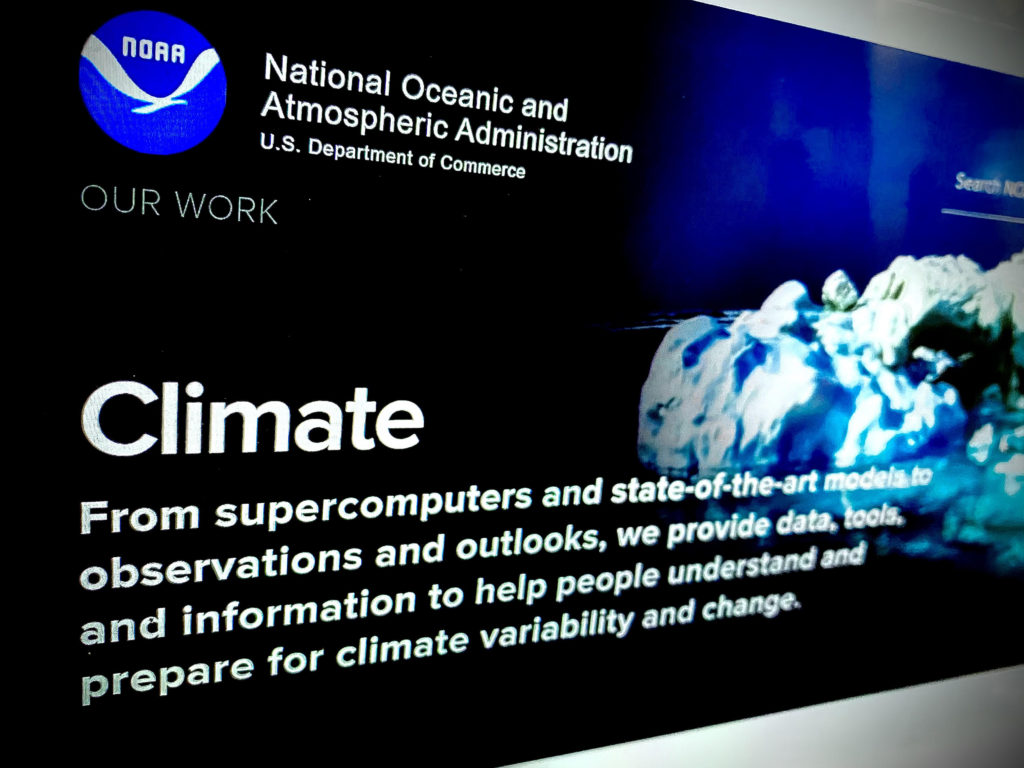
NOAA has a Climate Program Office (CPO) that processes and manages research programs centered around climate change. They fund climate science research, decision support research, education, outreach, capacity building activities, and assessments that increase our understanding of the Earth’s climate and adaptation efforts. This kind of research is conducted on national, international, and global scales.
While they have different grant programs every year, the most recent ones include the:
- NOAA Climate Adaptation and Mitigation Program (CAMP): Supports research, projects, programs and other activities related to the mission at NOAA. The program collaborates with professionals and scientists to find mutual interest and address climate change.
- NOAA Science Collaboration Program (NSCP): Supports earth systems research, social science research, interdisciplinary research, and modeling efforts to initiate collaborations between scientists and NOAA professionals.
3. Department of Housing and Urban Development (HUD)
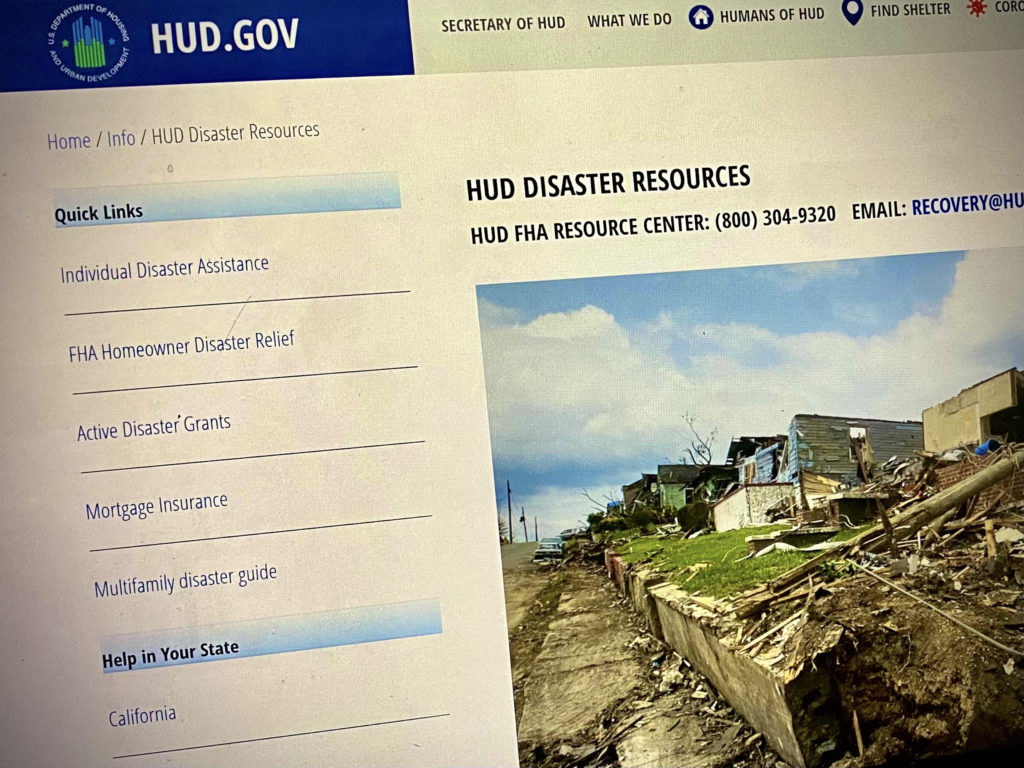
The U.S. Department of Housing and Urban Development (HUD) recently released their Resilience Toolkit to assist communities in enhancing their resilience to climate-change risks. The Toolkit highlights Community Planning and Development (CPD) programs which seeks to accomplish three things:
- Identify natural hazard risks related to climate change
- Consider actions that can increase resilience of housing, people, and infrastructure
- Implement actual resilience using HUD funds other financing
Community Development Block Grant (CDBG)
States and local governments may think about using HUD funds to provide services to vulnerable communities and build resilience. CDBG eligible activities include:
- Public facilities and infrastructure improvements
- Housing rehabilitation
- Public services
- Economic development
- Acquisition, disposition, clearance, and relocation
Community Development Block Grant Disaster Recovery (CDBG-DR)
Similarly, CDBG-DR grants may be used to increase resilience following a disaster. This includes:
- Buying damaged property in floodplains and relocating people to safer areas
- Rehabilitating and elevating homes, buildings, and public facilities
- Retaining and creating jobs in disaster affected areas
- Planning costs and administration costs
HOME Funds
HOME funds can be used to acquire, construct, and rehabilitate single family and multifamily housing.
Section 108
The Section 108 Loan Guarantee Program increases resilience by offering financing for public facilities, housing rehabilitation, and physical development projects. Eligible projects must be serve a public benefit and must meet a national objective. These funds can be used for long-term recovery initiatives and to prevent future damages from natural hazards.
Emergency Solutions Grants Program (ESG)
The Emergency Solutions Grants (ESG) program can be used to fund emergency shelters for homeless individuals and homeless families,
Continuum of Care Program (CoC)
The Continuum of Care (CoC) program provides funds to geographic entities to carry out homeless related activities. And while the CoC program generally supports housing assistance only, it can also be directed to support housing that promotes resilience.
Other HUD funding opportunities
There are several other funding opportunities from HUD that can also support resilience. This includes (1) the Section 203k rehabilitation loan program which can be used to repair and rehabilitate single-family properties, (2) the Capital Fund Financing Program (CFFP) which allows a Public Housing Authority (PHA) to borrow private capital, and (3) the Choice Neighborhoods program which provides grants to support site improvements, rehabilitation, housing construction, and community improvements in neighborhoods with distressed housing.
2. Environmental Protection Agency (EPA)
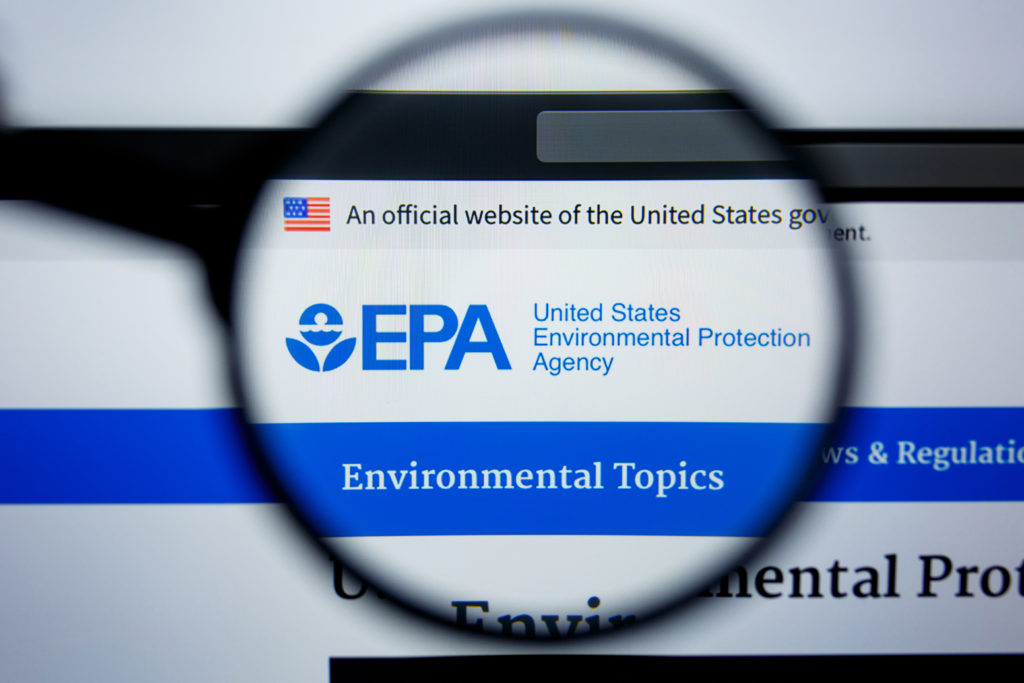
The Environmental Protection Agency (EPA) houses the Office of Sustainable Communities which will occasionally provide grants to support climate change activities relating to protecting human health, the environment, and quality of development. While the EPA has a plethora of funding opportunities, the two that are presently most relevant to climate change include the Tribal General Assistance Program and the Environmental Justice Small Grants Program.
Tribal General Assistance Program (GAP)
The Tribal General Assistance Program (GAP) was authorized after Congress passed the Indian Environmental General Assistance Program Act in 1992. This allowed the EPA to provide General Assistance Program grants to tribes (those that are federally recognized) to address and develop hazardous waste programs, environmental protection programs, and general planning on tribal lands.
In regard to climate change, it allows tribes to use the funds to develop Climate Change Adaptation Plans.
Environmental Justice Small Grants Program (EJSG)
Created in 1994, the Environmental Justice Small Grants Program (EJSG) is designed to provide financial assistance to communities, local tribal organizations, tribal governments, and community-based organizations to build partnerships, promote public health, and improve environmental well being. It also helps communities mitigate the risks associated with climate change where it has a newfound emphasis on community wide preparedness and resilience.
1. The Federal Emergency Management Agency (FEMA) – Our “Number 1” Federal Climate Change Organization
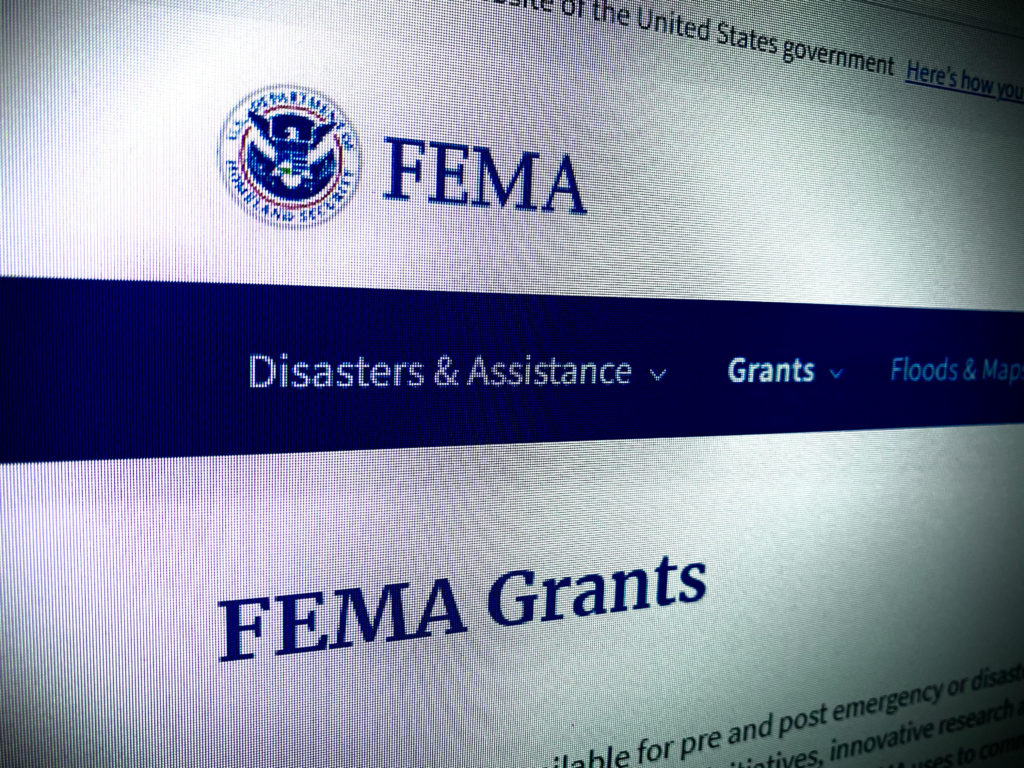
The best part about FEMA, and why it is number one on our list, is that it has “regulatory teeth.” This means that many FEMA programs have financial incentives for State, local, and tribal communities to (1) reduce vulnerabilities in communities affected by climate change, and (2) promote resilience and adaptation to climate change.
And while most people think of Federal Emergency Management Agency (FEMA) as a “Response” organization, FEMA is equally invested (if not more invested) in “Hazard Mitigation.”
This means that FEMA has a vested interest in reducing or eliminating long-term risk to people and property from hazards and disasters while essentially trying to eliminate the “damage and repair” cycle. Part of that “risk reduction” means that FEMA intends to promote climate change adaptation and build resilient communities through their programs.
Their top three climate change related funding programs include the Hazard Mitigation Grant Program (HMPGP), the Flood Mitigation Assistance Program (FMA), and the Building Resilient Infrastructure and Communities Program (BRIC).
Hazard Mitigation Grant Program (HMGP)
Only available after a presidentially declared disaster, the Hazard Mitigation Grant Program (HMGP) provides ‘project funding’ to various levels of government in order to rebuild in ways that reduce future disaster losses.
HMGP fundable projects include:
- Acquisition of flood prone and hazard prone homes and businesses so that owners can relocate to safer locations.
- Building permanent barriers around homes and businesses to prevent flooding (i.e. levees, floodproofing, etc.)
- Elevating structures above the base flood elevation
- Rebuilding damaged homes on elevated foundations
- Retrofitting buildings to make them more resilient to natural hazards
- Retrofitting utilities and various infrastructure to increase resistance to hazards
- Constructing safe rooms for people and communities in areas affected by tornados and hurricanes
- Slope stabilization
- Improving drainage through flood risk reduction projects
- Code enforcement (following a disaster)
- Creating and developing hazard mitigation plans
Flood Mitigation Assistance Program (FMA)
As a competitive grant program that provides funding to states, federally recognized tribes and territories, and local communities, Flood Mitigation Assistance (FMA) is used to fund projects that reduce or eliminate the risk of repetitive flooding to buildings insured by the National Flood Insurance Program (NFIP).
As a condition of receiving the grant, the state, community, or tribe must have an approved hazard mitigation plan in place.
Building Resilient Infrastructure and Communities Program (BRIC)
The Building Resilient Infrastructure and Communities (BRIC) program replaced the Pre-Disaster Mitigation (PDM) program as the primary mitigation-focused grant within FEMA. As the program supports states, local communities, and tribes and territories, the program is designed to support mitigation projects through capacity/capability building and partnerships.
Climate Change Organizations and Climate Change Grants 2021 Summary
So there you have it, our top 10 federal climate funding opportunities and climate change grants for 2021.
In summary, just remember that there are multiple opportunities through our federal government to tackle climate change even though they may not all “directly” say it. But, by addressing the issue through the lens of adaptation, strategy, and environmental innovation, our federal agencies are in fact putting in the work to overcome the crisis and offering financial opportunities to our communities in the process.
Please note that this list is by no means final. With dozens of other federal climate change organizations (and hundreds of climate change groups and world climate change organizations) tackling the issue simultaneously, it’s hard to give weight to any one organizations addressing the larger climate change movement. We will update as needed, but if you see a mistake or have a recommendation, feel free to let us know in the comment section.
